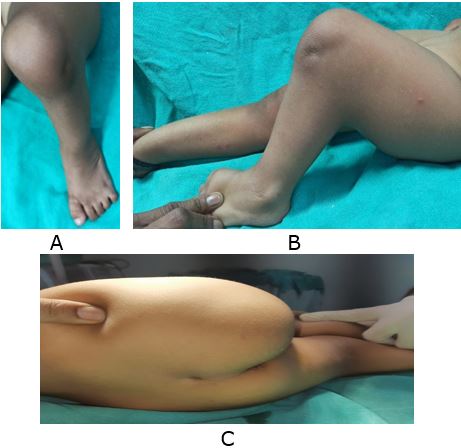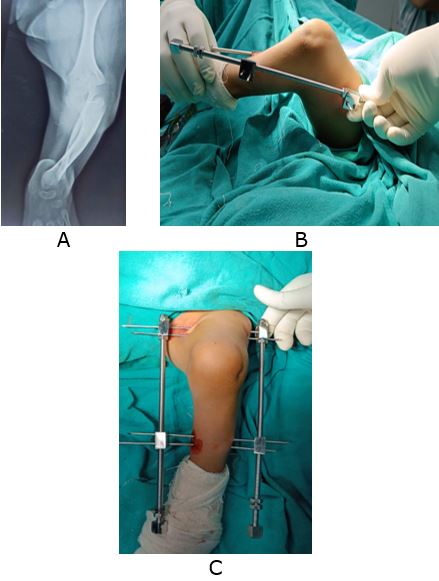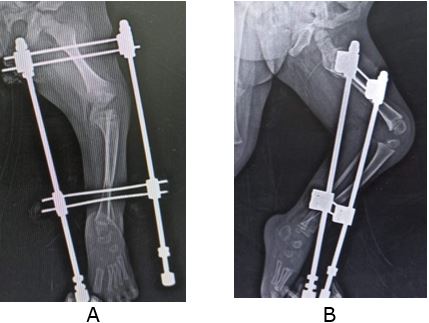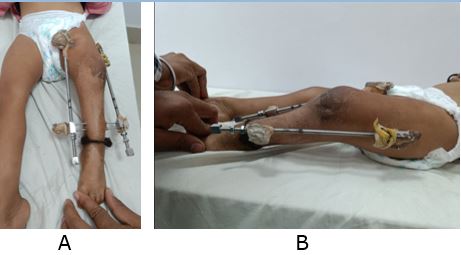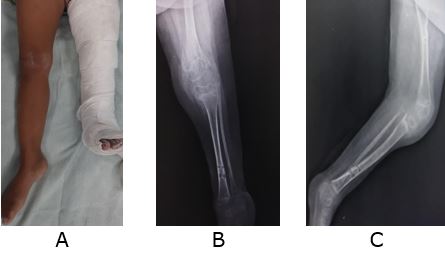A rare case of popliteal pterygium syndrome
Hans A1, Bajoria RS2*, Singhal V3
1 A Hans, Department of Orthopedics, Gajra Raja Medical College, Gwalior, Mp, India.
2* R S Bajoria, Professor, Department of Orthopedics, Gajra Raja Medical College, Gwalior, Mp, India.
3 V Singhal, Department of Orthopedics, Gajra Raja Medical College, Gwalior, Mp, India.
Popliteal Pterygium Synrdome is an extremely rare genetic disorder which can present with multiple body anomalies, especially the musculoskeletal anomalies.
The very striking characteristic is presence of popliteal pterygium contracture; this connective tissue band can extend from ischial tuberosity to the calcaneum which can severely restrict range of motion, knee extension, abduction and rotation. This case report presents a case of 3-year-old girl child with significant unilateral deformity in left lower limb. Examination revealed extensive popliteal web/contracture left side with associated deformity at left ankle. Serial surgical correction was done with uniplanar ex fix (Distractor) application followed by Tendo Achillis tenotomy and serial splinting with regular follow-ups done. The child was treated successfully with satisfactory results
Keywords: popliteal pterygium syndrome, rare genetic disorder, musculoskeletal anomalies
| Corresponding Author | How to Cite this Article | To Browse |
|---|---|---|
| , Professor, Department of Orthopedics, Gajra Raja Medical College, Gwalior, Mp, India. Email: |
Hans A, Bajoria RS, Singhal V, A rare case of popliteal pterygium syndrome. ojmpc. 2023;29(2):60-61. Available From https://ojmpc.com/index.php/ojmpc/article/view/180 |



